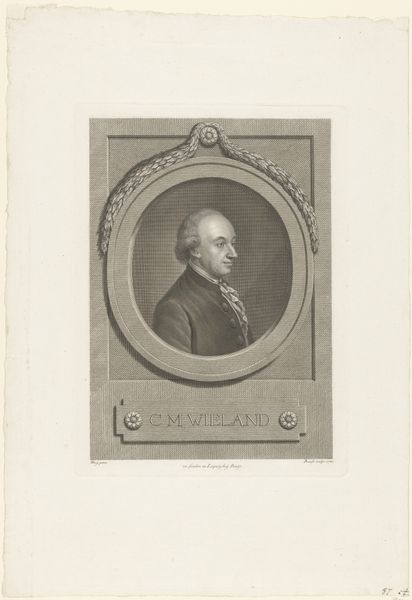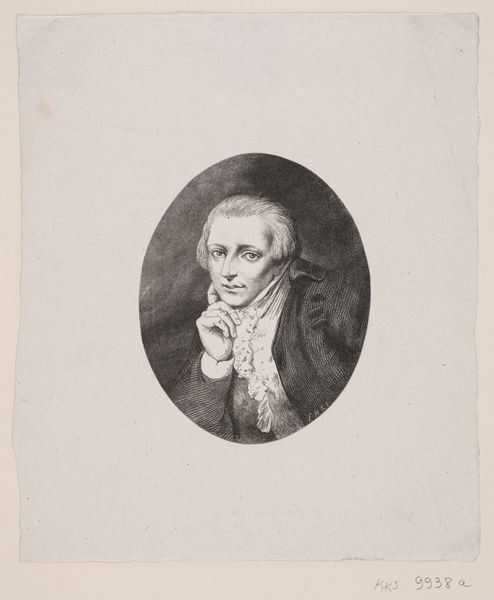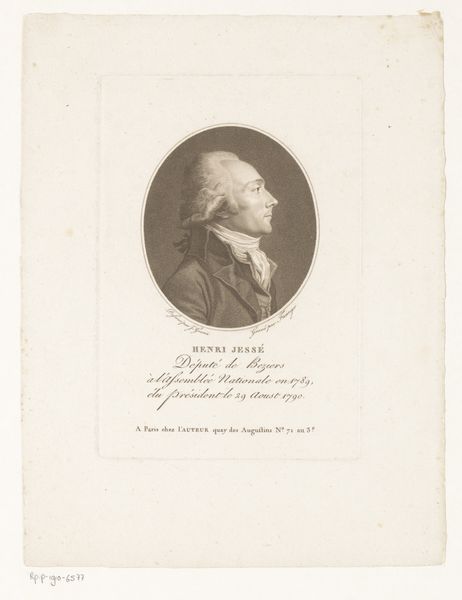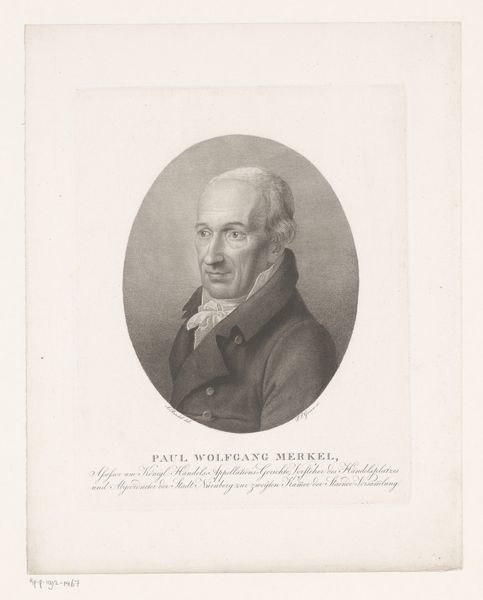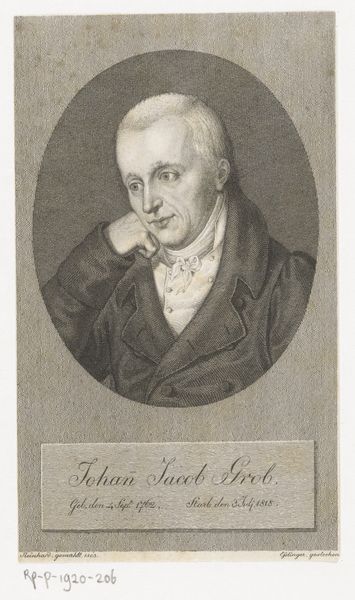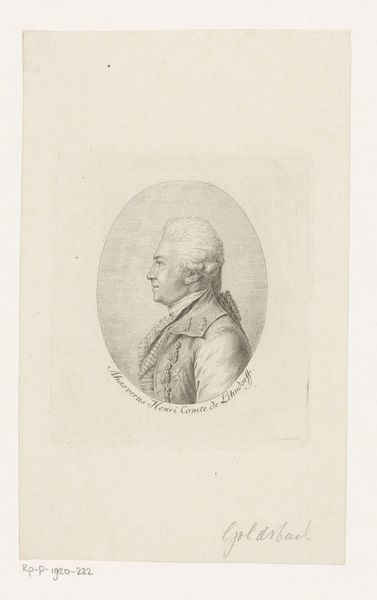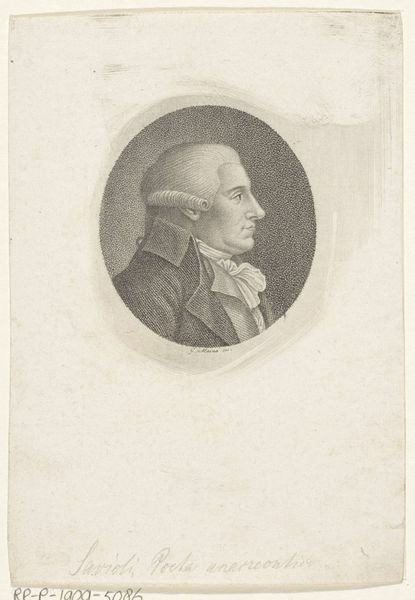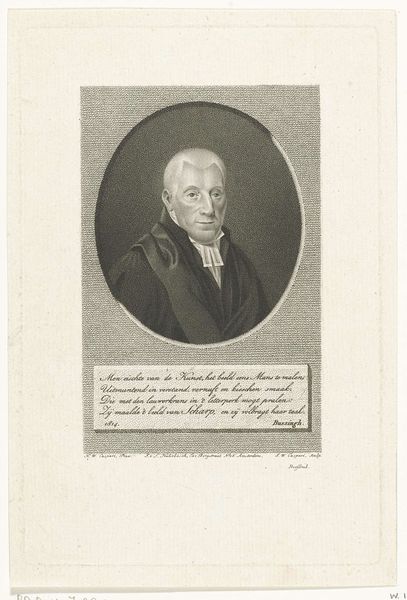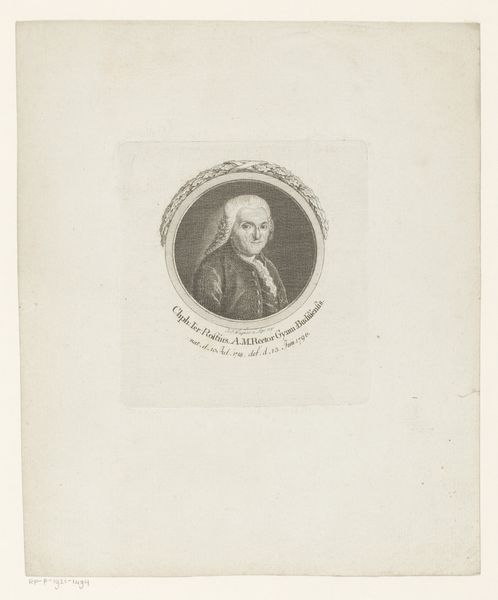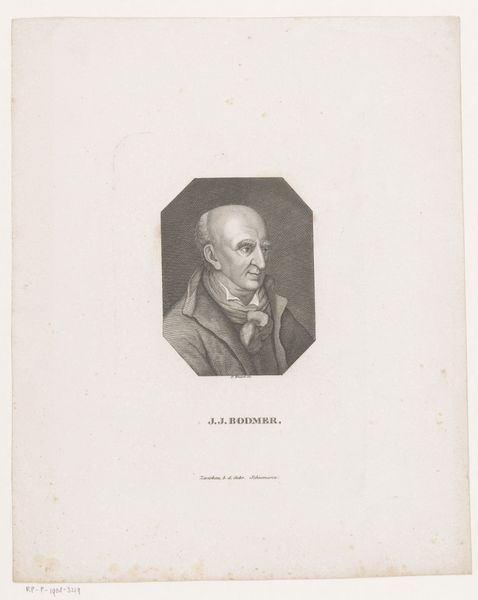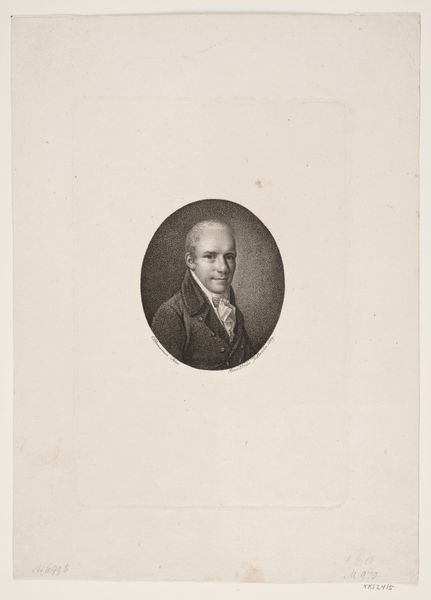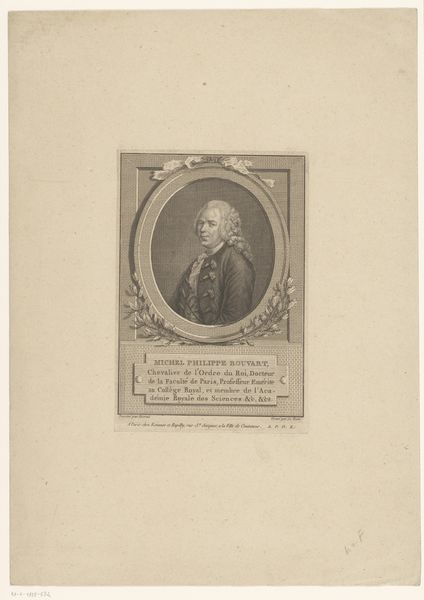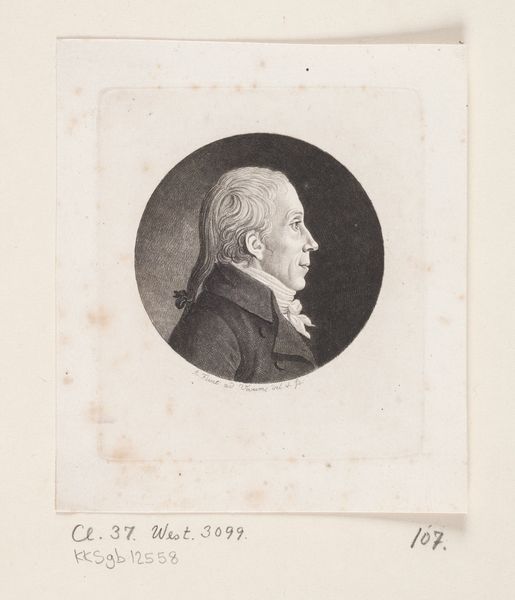
engraving
#
portrait
#
neoclacissism
#
old engraving style
#
form
#
pencil drawing
#
line
#
engraving
#
realism
Dimensions: height 127 mm, width 79 mm
Copyright: Rijks Museum: Open Domain
Curator: This engraving, dating from somewhere between 1759 and 1815, is titled "Portret van Johann Jacob Bodmer" and was created by Heinrich Pfenninger. It’s rendered in that distinctly neoclassical style, all sharp lines and composed reserve. What catches your eye about it? Editor: Immediately, a sense of contained energy. The man's face, etched with lines of age and wisdom, seems ready to break free from that rigid oval frame. It is the portrait of an intellectual that somehow doesn't quite fit into a "proper" portrait style. Curator: Interesting! It does challenge the conventions a bit. Pfenninger, though working within Neoclassicism, manages to hint at a deeper, almost rebellious spirit in Bodmer's expression. Do you know about Johann Jacob Bodmer? He was quite the character. Editor: I do! He was a Swiss critic, an advocate for Milton, and, crucially, a key figure challenging French literary dominance in the German-speaking world. The engraving’s direct gaze feels very connected to his intellectual activism. It’s a deliberate assertion of self. He broke from rules when he brought the English form of epic poems into the German literary discussion, right? Curator: Exactly! And think about the implications of portraying him this way, a humanist but an old, intellectual rebel... It makes me think about the era and what could happen if that gaze got the opportunity to wander in places forbidden for human beings at the time. What kind of "sin" or forbidden territory will someone discover? Editor: And beyond Bodmer's personal story, this image speaks to broader power dynamics of the time. Visual representation, particularly portraiture, was so important in solidifying social hierarchies. The details in his worn garments become points of quiet resistance against expected aristocratic splendour. He dares to be seen, simply as a man of intellect. It demands: What's truly important – finery, or ideas? Curator: A very good point! And there is that somewhat melancholic touch, and perhaps something else… a defiance and acceptance that he did everything he wanted to in this life, with its gains and losses. Editor: Yes, there’s a depth of lived experience there. It’s a powerful reminder that art isn't just about aesthetics; it's about cultural and intellectual revolutions and, maybe even more importantly, its unsung, everyday heroes and their simple attires. It gives the opportunity to viewers to ponder that question of heroism from the place of comfort and not as a moral burden. Curator: Absolutely. It’s a compelling testament to the enduring power of individual conviction. Thank you! Editor: Indeed, it makes one rethink everything, doesn't it?
Comments
No comments
Be the first to comment and join the conversation on the ultimate creative platform.
